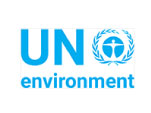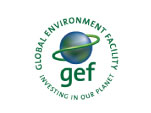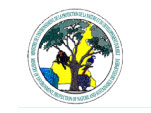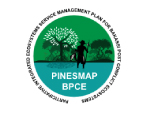 |
 |
 |
 |
“Participative Integrated Ecosystem Services Management Plans for Bakassi Post Conflict Ecosystem –PINESMAP-BPCE.”
WHAT IS IT ALL ABOUT?
The Participative Integrated Ecosystems Services Management Plans for Bakassi Post Conflict Ecosystems which aims to ensure biodiversity conservation and sustainable use and improved management of Bakassi ecosystems through integrated ecosystem management plans including ecosystem valuation is a biodiversity conservation and Development Project of the Republic of Cameroon funded by the United Nation's Environment Programme(UNEP), and the Ministry of Environment, Protection of Nature & Sustainable Development (MINEPDED).
The project aims to support the Government of Cameroon to develop an Integrated Ecosystem Services Management Plan (IESMP) for the Bakassi ecosystems. Through the IESMP, the project will harmonize sustainable development initiatives that guaranteed biodiversity conservation and alternative livelihoods for the local communities.
The IESMP will be operationalized though selective pilot activities related to biodiversity conservation and alternative livelihoods through supporting the stakeholders to ensure sustainable management of mangroves, in order to reduce pressures from overexploitation of mangrove wood for smoking fish and for construction materials and thereby to protect marine biodiversity linked to the mangrove ecosystems.
PROJECT OBJECTIVES
To ensure biodiversity conservation and sustainable use and improved management of Bakassi ecosystems through integrated ecosystem management plans including ecosystem valuation.
PROJECT HISTORY
The coastal and marine environments of the project area are characterized by abundant mangrove forests, estuaries, coral reefs, and other ecosystems, and the availability of marine resources is directly related to the health and integrity of these ecosystems. However, many fishing practices in the region are unsustainable, for example the over-exploitation of selected fish species to supply trans-boundary markets, and the frequent use of dynamite, cyanide, and illegal gear. In addition, many large commercial fishing boats fish in areas where they are not allowed to be (e.g. in traditional fishing waters) because the government does not do anything to support traditional claims to these areas or to enforce no-commercial-fishing limits. The Bakassi peninsula also suffers from widespread indiscriminate harvesting of mangroves trees to meet demand for fuel wood (smoking of fish), for building materials (housing construction) leading to habitat destruction.
The aquatic and marine ecosystems of the Bakassi area, in particular the coastal estuaries, are degraded by organic pollution (e.g. human waste), agricultural chemical (especially pesticides), and petrochemical pollution. Poor hygiene and sanitary conditions in local communities degrade ecosystem functions and threaten biodiversity, while also contaminating groundwater and endangering human health in the region.
By establishing an integrated ecosystem level approach to resource management and use that incorporates ecosystem services and values, strengthens management of protected areas, supports sustainable livelihood options and establishes mechanisms for long-term sustainable funding, the project will help to reduce the primary threats to biodiversity in the Bakassi area of southwest Cameroon, in particular biodiversity loss due to over-harvesting and conversion of habitat, unplanned development leading to encroachment on natural habitat, and resource use conflicts among local communities. The Project will contribute to maintaining global environmental benefits by conserving threatened taxa of global importance, preserving habitat and or important ecosystems for threatened and endemic species of global importance, linking improved local community livelihoods with sustainable resource management and conservation of ecosystem services. Other global benefits of the project will include demonstrating post-conflict recovery involving improved environmental management and demonstrating a site-specific financing mechanism for long-term sustainable funding of biodiversity conservation.
PINESMAP-BPCE makes perspicuous reference to the 9th Conference of the Parties to the Convention of Biological Diversity (CBD) which requested all parties to ensure Pas contribute to the eradication of poverty and sustainable development and to the Revised Strategic Plan for Biodiversity 2011-2020 including the Aichi Targets which were adopted at the 10th COP, and Decision No. UNEP/CBD/COP/DEC/XI/3 of 5 December 2012 adopted at the 11th COP on "Monitoring progress in implementation of the Strategic Plan for Biodiversity 2011-2020 and the Aichi Biodiversity Targets". The overall goal of SUFACHAC is to support progress towards many Aichi targets and indicators. Specifically, it aims at:
- Address the underlying causes of Biodiversity loss by mainstreaming biodiversity across government and society ;
- Reduce the direct pressures on Biodiversity and promote sustainable use ;
- To improve the status of biodiversity by safeguarding ecosystems, species and genetic diversity, with particular relevance to and ;
- Enhance the benefits to all from biodiversity and ecosystem services ;
- Enhance implementation through participatory planning, knowledge management and capacity building.
PROJECT VISION
By 2020, biodiversity values, ecosystem services / biodiversity priorities have been integrated into national and local development and planning processes and being incorporated into national accounting, as appropriate and reporting systems
PROJECT BENEFICIARIES
The immediate beneficiaries of the project are seven (7) sub-divisions of Ndian (Isangele, Bamusso, Idabato, Kombo Abedimo, Kombo Itindi, Mundemba and Ekondo Titi), divisions in the South West region of Cameroon.
Follow Us on :